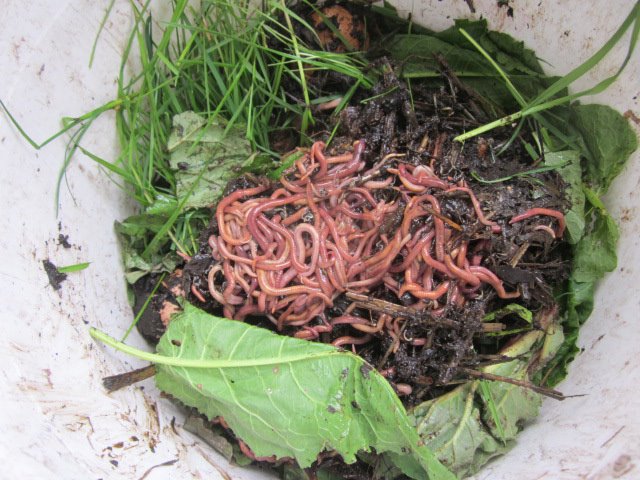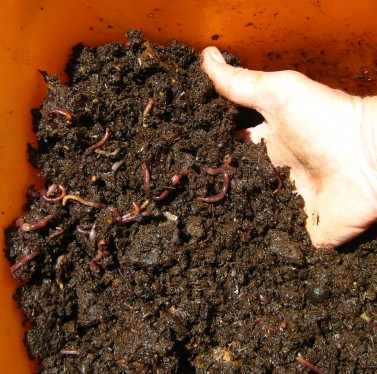Understanding the Advantages of Red Wiggler Composting: Exactly How This Reliable Method Changes Organic Waste Into Nutrient-Rich Dirt Amendments
Red Wiggler composting, using the types Eisenia fetida, provides an engaging technique to natural waste management, transforming kitchen area scraps and yard debris into important dirt changes. This technique not just enhances soil fertility but additionally addresses pushing environmental issues, consisting of garbage dump waste reduction and greenhouse gas exhausts. As we explore the details of this process, the diverse benefits it supplies might reveal unforeseen understandings right into lasting practices and eco-friendly balance. Recognizing these measurements might prompt a reevaluation of how we regard waste and its potential payments to a healthier world.
What Are Red Wigglers?
Red wigglers, scientifically understood as Eisenia fetida, are a varieties of earthworm that play an essential role in vermicomposting systems. These worms are characterized by their reddish-brown shade, segmented bodies, and a distinct capacity to prosper in organic-rich atmospheres, making them ideal for composting applications - Red Wiggler Composting. Unlike their garden-dwelling counterparts, red wigglers choose to live in the top layers of soil, where decomposing issue is abundant
Typically determining in between 3 to 4 inches in size, red wigglers have a high reproductive rate, allowing them to increase swiftly under optimum conditions. They have an unique gastrointestinal system that enables them to process organic waste efficiently, converting it into nutrient-rich spreadings, which are highly helpful for plant growth.
Their resistance to differing dampness levels and temperature ranges better boosts their utility in vermicomposting setups, making them a preferred choice among composting fanatics. In addition, red wigglers are cardio organisms, which requires a well-aerated composting environment, guaranteeing efficient disintegration. Comprehending the biological qualities and actions of red wigglers is vital for optimizing their usage in lasting waste administration practices.

Benefits of Vermicomposting
Harnessing the power of vermicomposting deals a wide variety of environmental and agricultural advantages. First of all, it dramatically decreases natural waste in landfills, consequently lessening methane exhausts, a potent greenhouse gas. By diverting food scraps and lawn waste to vermicomposting, we sustain a more lasting waste administration system.
Furthermore, vermicomposting enhances soil wellness. The spreadings generated by red wigglers are abundant in vital nutrients, germs, and enzymes, boosting soil structure and fertility. This nutrient-rich modification advertises durable plant growth and increases water retention, minimizing the demand for chemical plant foods.
Additionally, vermicomposting fosters biodiversity in the soil ecosystem. The introduction of beneficial bacteria from worm castings help in condition suppression and nutrient cycling, creating a much healthier setting for plants.
Economically, vermicomposting decreases the prices connected with chemical inputs and garbage disposal. Farmers and gardeners can cultivate high-grade fruit and vegetables have a peek at this website at reduced costs, adding to food safety and sustainability.
Just How to Begin Composting
Beginning a composting endeavor can be a rewarding and straightforward procedure. This will certainly help maintain a balanced temperature, crucial for the composting process.
Collect organic products such as cooking area scraps, backyard waste, and shredded paper. Objective for a well balanced mix of 'green' materials, high in nitrogen (e.g., fruit scraps, coffee grounds), and 'brown' materials, rich in carbon (e.g., dried fallen leaves, cardboard) A ratio of about 2:1 green to brownish materials is suitable.
Begin layering your products, guaranteeing appropriate air flow by turning the stack frequently. This advertises cardio decomposition, speeding up and lowering odors up the process. Monitor moisture degrees; the garden compost should feel like a moist sponge yet not extremely damp.
Nutrient Profile of Vermicompost
Composting, specifically with red wigglers, generates a nutrient-rich item understood as vermicompost. Furthermore, it offers trace elements like iron, magnesium, and calcium, fostering durable plant advancement and improving dirt health.
The microbial task present in vermicompost further enhances its account, presenting valuable germs and fungi that advertise vitamins and check mineral accessibility and uptake in plants. This biological part aids in subduing plant diseases and improving soil structure, causing enhanced water retention and aeration.

Ecological Influence of Composting
The environmental impact of composting, specifically via using red wigglers, is multifaceted and extensive. This approach dramatically lowers the volume of natural waste sent to landfills, which consequently reduces greenhouse gas exhausts, especially methane-- a powerful contributor to environment modification. By drawing away organic materials from garbage dumps, red wiggler composting not only helps alleviate ecological deterioration however likewise advertises lasting waste monitoring practices.

Additionally, composting adds to carbon sequestration, as the process catches carbon dioxide from the atmosphere and stores it in the dirt. This natural procedure help in combating climate modification while enriching the dirt - Red Wiggler Composting. Generally, red wiggler composting provides a sensible, environmentally friendly solution for waste administration and ecological sustainability, advertising much healthier ecosystems and an extra lasting future
Conclusion
In verdict, Red Wiggler composting serves as a reliable approach for converting natural waste into useful soil modifications. The procedure not just boosts soil fertility and framework check these guys out but likewise alleviates ecological issues associated with waste disposal.
Red Wiggler composting, utilizing the types Eisenia fetida, offers a compelling technique to natural waste management, converting cooking area scraps and yard debris right into valuable dirt amendments. Unlike their garden-dwelling equivalents, red wigglers favor to occupy the upper layers of dirt, where rotting issue is plentiful.
The castings produced by red wigglers are abundant in crucial nutrients, microorganisms, and enzymes, improving soil structure and fertility. The nutrient-rich by-products of red wiggler activity improve soil structure, boost water retention, and advertise biodiversity within the dirt environment.In final thought, Red Wiggler composting serves as an effective technique for transforming organic waste right into useful soil modifications.
Comments on “Mastering Red Wiggler Composting: Essential Practices for Healthy And Balanced Composting”